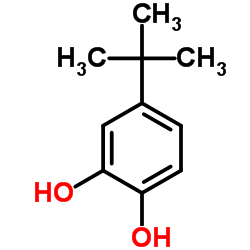Screen-printed immunosensor modified with carbon nanotubes in a continuous-flow system for the Botrytis cinerea determination in apple tissues.
Martín A Fernández-Baldo, Germán A Messina, Maria I Sanz, Julio Raba
文献索引:Talanta 79(3) , 681-6, (2009)
全文:HTML全文
摘要
Botrytis cinerea is a plant-pathogenic fungus that produces the disease known as grey mould in a wide variety of agriculturally important hosts in many countries. This paper describes the development of an immunosensor coupled to carbon-based screen-printed electrodes (SPCE) modified with multi-walled carbon nanotubes (CNTs), which show a rapid and sensitive determination of B. cinerea in apple tissues (Red-delicious) using a competitive immunoassay method. Both the infected plant tissue sample and the B. cinerea-specific monoclonal antibody are allowed to react immunologically with the B. cinerea purified antigens immobilized on a rotating disk. Then, the bound antibodies are quantified by a horseradish peroxidise (HRP) enzyme labeled second antibodies specific to mouse IgG, using 4-tertbutylcatechol (4-TBC) as enzymatic mediators. The HRP, in the presence of hydrogen peroxide, catalyses the oxidation of 4-TBC to 4-tertbutyl o-benzoquinone. The electrochemical reduction back to 4-TBC is detected on SPCE-CNT at -0.15 V. The response current is inversely proportional to the amount of the B. cinerea antigens present in the fruit sample. The time consumed per assay was 30 min and the calculated detection limits for electrochemical method and the ELISA procedure are 0.02 and 10 microg mL(-1), respectively. Moreover the intra- and inter-assay coefficients of variation were below 7%. This electrochemical immunosensor promises to be usefully suited to the detection and quantification of B. cinerea in apparently healthy plant prior to the development of the symptoms.
相关化合物
| 结构式 | 名称/CAS号 | 分子式 | 全部文献 |
|---|---|---|---|
 |
对叔丁基邻苯二酚
CAS:98-29-3 |
C10H14O2 |
|
Preparation and evaluation of monolithic poly(N-vinylcarbazo...
2014-09-01 [Anal. Bioanal. Chem , (2014)] |
|
A simple approach for ultrasensitive detection of bisphenols...
2015-08-12 [Anal. Chim. Acta 888 , 118-25, (2015)] |
|
The pro-enzyme C-terminal processing domain of Pholiota name...
2015-07-01 [Appl. Microbiol. Biotechnol. 99 , 5499-510, (2015)] |
|
Reduction in eumelanin by the activation of glutathione redu...
1983-04-15 [Biochem. Pharmacol. 32(8) , 1379-82, (1983)] |
|
Occupational dermatoses among fibreglass-reinforced plastics...
2002-06-01 [Contact Dermatitis 46(6) , 339-47, (2002)] |